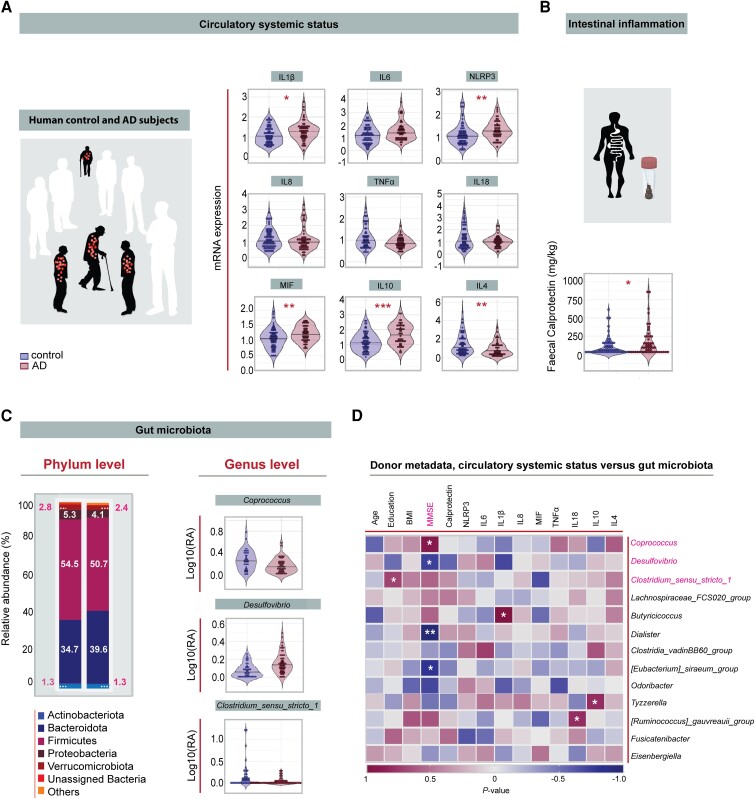Figure 1.
Associations between circulatory systemic factors, gut microbiota and cognitive status of Alzheimer’s disease patients. (A) There was increased expression of the cytokines IL-1β (*P = 0.018), NLRP3 (**P = 0.003), MIF (**P = 0.008), IL-10 (***P < 0.001) and decreased expression of IL-4 (**P = 0.006) in Alzheimer’s disease patients (n = 52) compared to control subjects (n = 68), unpaired, two-tailed Student’s t-test for continuous Gaussian variables (or Mann-Whitney test for non-Gaussian variables). (B) Faecal calprotectin was significantly increased in Alzheimer’s patients (n = 64) compared to control subjects (n = 69), Mann-Whitney test. *P = 0.022. (C) Gut microbiota composition at phylum level from control (n = 41) and Alzheimer’s patients (n = 54). Alzheimer’s patients had higher abundance of phyla Bacteroides, and lower abundance of phyla Firmicutes and Verrucomicrobiota. Relative abundance of genera that differed significantly between controls and Alzheimer’s patients after batch correction using percentile-normalization. Mann-Whitney tests, multiple testing corrections using the Benjamini–Hochberg method, and FDR ≤ 0.1 was considered significant (Coprococcus, P = 0.099; Clostridium in sensu stricto 1, P = 0.099; Desulfovibrio, P = 0.006). (D) Correlation between human gut microbiota, human donor metadata, faecal calprotectin and serum markers. Heat map shows Spearman rank coefficients, with red indicating strong positive correlation, and blue indicating strong negative correlation. P-values for significant correlations (α < 0.05) are noted (*P < 0.05, **P < 0.01, ***P < 0.001). Black horizontal lines in violin plots indicate medians. *P < 0.05, **P < 0.01, ***P < 0.001. NS = not significant; AD = Alzheimer’s disease.

